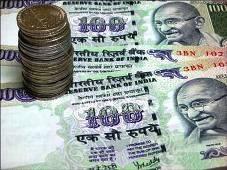 | « Back to article | Print this article |
 The benchmark prime lending rate is set to give way to a new loan pricing regime. Called base rate by a committee of the Reserve Bank of India, it will represent the bare minimum rate below which it will not be viable for banks to lend.
The benchmark prime lending rate is set to give way to a new loan pricing regime. Called base rate by a committee of the Reserve Bank of India, it will represent the bare minimum rate below which it will not be viable for banks to lend.
The working group, which reviewed the system of lending rates, said in a report on Wednesday that the Base Rate could serve as the benchmark for floating rate loans.
The change is not only in the name. The committee wants banks to bring more transparency in pricing products and to reflect changes in policy rates. In addition, the committee is aiming to abolish sub-BPLR lending. Currently more than 70 per cent loans are priced below the BPLR.
To make the new rate responsive to RBI's policy rates, the group suggested that banks would have to announce their base rates quarterly. The Base Rate and the actual minimum and maximum rates will also have to be placed in public domain.
Taking 2008-09 data, the RBI panel has worked out the Base Rate at 8.55 per cent. A few bankers, however, felt that lending rates might come down only marginally if the new methodology was followed. In addition, a few private sector lenders, which have separate reference rates for retail and corporate lenders, will have to discontinue this practice.
At present, the BPLR of banks varies from 11 per cent to 16 per cent.
The committee, headed by Deepak Mohanty, executive director, RBI, suggested that the rate be calculated taking into account the one-year retail term deposit rate for less than Rs 15 lakh (Rs 1.5 million) after adjusting for the cost of current and savings accounts, negative carry of the cash reserve ratio and the statutory liquidity ratio and overhead costs (which will comprise a minimum set of overhead cost elements and average return on net worth).
At present, State Bank of India offers 6.25 per cent for deposits of one-two years.
"The actual lending rate will be the Base Rate plus borrower-specific charges, which will include product-specific operating costs as well as risk and tenor premiums," said the working group.
The group suggested that the proposed system apply to new loans as well as to existing loans coming up for renewal.
The committee recognised that banks might have to lend below their base rates in certain situations. However, to ensure that sub-Base Rate loans do not "proliferate," the group has stipulated that 15 per cent of the banks' incremental lending in a year can be below the Base Rate. But such loans can have maturities of less than one year.
The group further said that the non-priority sub-Base Rate lending should not exceed 5 per cent of the banks' incremental lending and that banks would be free to extend the entire sub-Base Rate lending of up to 15 per cent to the priority sector.
The committee also recommended deregulation of lending rates for small borrowers for loans up to Rs 200,000.
In order to incentivise exporters, the interest rate on rupee export credit should not exceed the Base Rate of individual banks, said the panel.
The group felt the need to continue with administered rates for educational loans and recommended that the rates on all education loans should not exceed the average Base Rate of five largest banks plus 200 basis points.